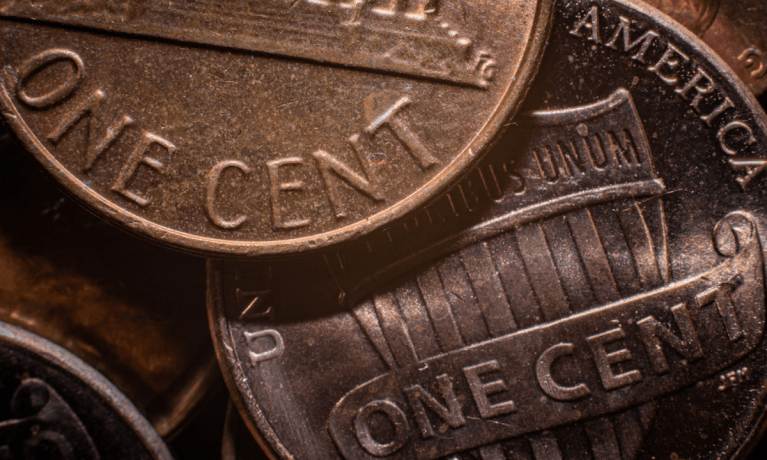It’s official: the penny’s days are numbered. After more than two centuries of jingling in pockets, lining cash registers and fueling both nostalgia and frustration, the one-cent coin will cease production early next year, the U.S. Treasury has confirmed. The decision, driven by mounting production costs and waning demand, marks the close of an era for a coin that has been a mainstay of American commerce since the 1790s. As we prepare to bid adieu to the humble penny, the PYMNTS Weekender takes a lighthearted look at its storied history, curious use cases and enduring symbolism.
A Brief History of the Penny
The penny’s roots stretch back to ancient Rome, but its American incarnation began in 1787 with the “Fugio” cent, a copper coin designed by Benjamin Franklin. The U.S. Mint, established by the Coinage Act of 1792, made the penny one of its first priorities, drawing inspiration from the British penny that colonists already knew well.
Early American pennies were hefty, nearly the size of a modern half-dollar and made from pure copper. Over time, rising copper prices and practicality led to the introduction of smaller, lighter coins. The Flying Eagle cent arrived in 1857, followed by the iconic Indian Head cent in 1859. However, it was the Lincoln cent, introduced in 1909 to mark Abraham Lincoln’s 100th birthday, that cemented the penny’s place in the American psyche. Lincoln was the first real person’s portrait to grace U.S. currency, and his profile has appeared on the penny ever since.
The penny’s composition has shifted with the times. During World War II, copper shortages led to a brief experiment with zinc-coated steel pennies. Since 1982, the coin has been mostly zinc with a thin copper plating — a cost-saving measure that ultimately couldn’t keep up with the rising price of raw materials.
Why the Penny’s Time Is Up
The penny’s demise is, at heart, a matter of economics. In 2024, it cost nearly 3.7 cents to produce a single penny — almost four times its face value — resulting in annual losses exceeding $56 million for the U.S. Mint. With more than half of all pennies languishing in jars and drawers, and digital payments reducing the need for small change, the penny’s utility has dwindled.
The U.S. follows the lead of countries like Canada, Australia and New Zealand, which have already retired their lowest-denomination coins with minimal disruption. Retailers are preparing to round cash transactions to the nearest nickel, while electronic payments will continue to be calculated to the cent. The transition is expected to save taxpayers millions and streamline cash handling for businesses.
Significant Use Cases and Cultural Impact
Despite its declining value, the penny has punched above its weight in American culture and commerce:
- Pricing Precision: Pennies have long enabled retailers to offer prices ending in .99, a psychological tactic that makes goods appear cheaper and keeps transactions precise. Their absence will force businesses to rethink pricing strategies and point-of-sale systems.
- Charitable Giving: “Penny drives” have raised millions for charities and schools, proving that small change can add up to big impact. Even as digital “round-up” donations become more common, the penny’s role in grassroots philanthropy remains legendary.
- Symbol of Thrift: The penny has come to represent frugality and the American spirit of making every cent count. Expressions like “a penny saved is a penny earned” and “a penny for your thoughts” are woven into the national lexicon.
- Numismatic Allure: For generations, the penny has been the gateway coin for collectors. From rare Wheat Cents to error coins, hunting for valuable pennies remains a beloved pastime.
- Everyday Utility: While many dismiss pennies as a nuisance, for lower-income Americans and cash-reliant communities, every cent can make a difference — whether paying for groceries or saving for a rainy day.
The Last Word
As the penny prepares to take its final bow, it leaves behind a legacy far greater than its one-cent value. It has witnessed the nation’s growth, chronicled its leaders and quietly facilitated countless transactions. In a world moving ever faster toward digital payments and economic efficiency, the penny’s passing is both inevitable and bittersweet.
So, as you empty your pockets this weekend, spare a thought for the little coin that could. The penny may soon be gone, but its imprint on American life — and our collective memory — will endure, one cent at a time.




